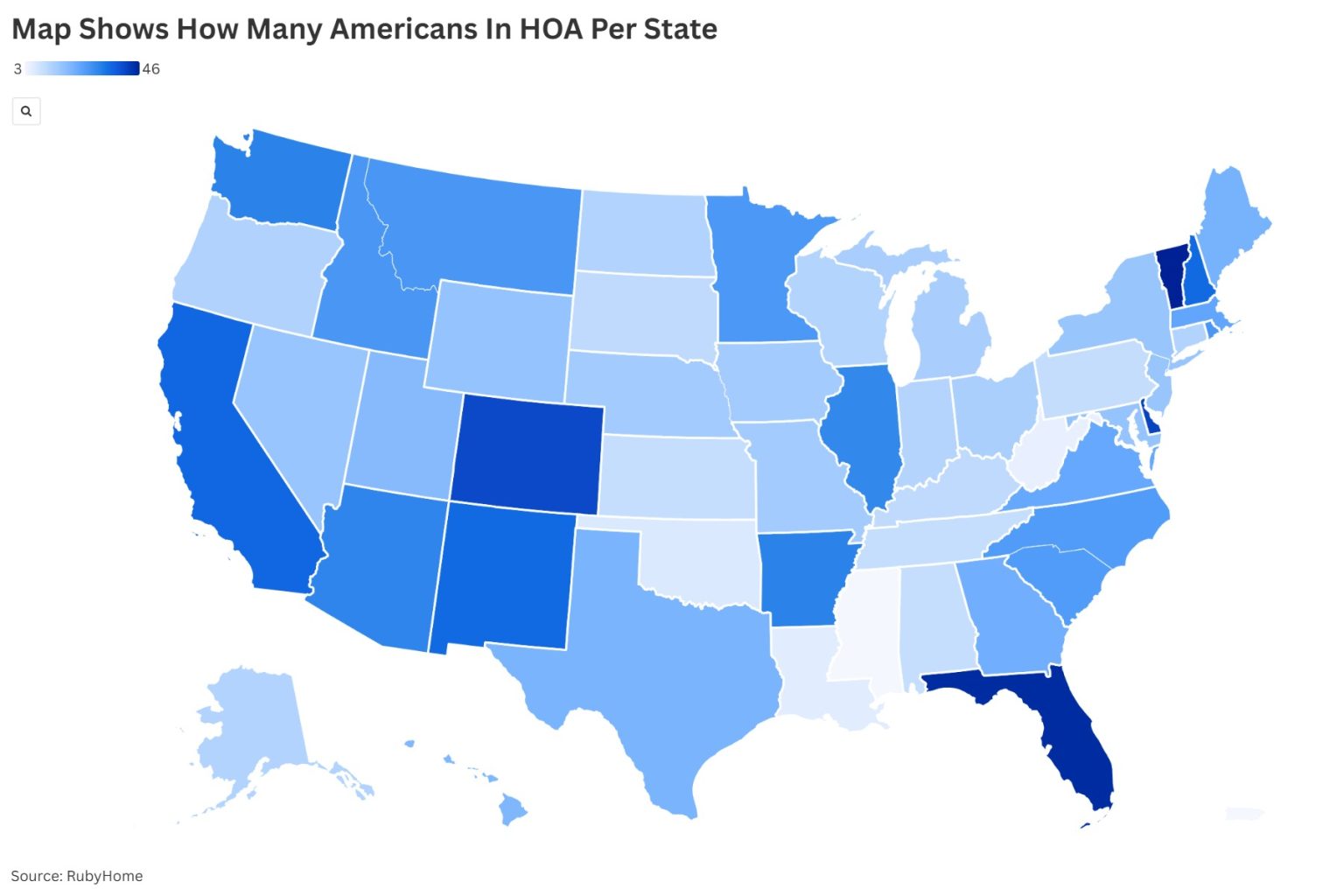The Rise of Homeowners Associations in America: A Tale of Community Living
Homeowners Associations (HOAs) have become a defining feature of American residential life, with their influence varying dramatically across the country. According to recent data compiled by RubyHome Luxury Real Estate from the Foundation for Community Association Research, Vermont, Florida, and Delaware stand as the states with the highest concentration of residents living under HOA governance. In Vermont, an impressive 46 percent of residents live within HOA communities, closely followed by Florida at 44.5 percent and Delaware at 41 percent. This stands in stark contrast to states like West Virginia, where only 5 percent of the population resides in HOA-governed communities, or Puerto Rico and Mississippi, where the figure drops to a mere 3 percent. These statistics paint a picture of America’s uneven relationship with community governance, revealing how geographic, economic, and cultural factors influence where HOAs take root and thrive.
The prominence of HOAs in American residential life cannot be understated, with approximately 30 percent of the U.S. population—over 75 million people—living in roughly 365,000 HOA communities nationwide. For these residents, HOA living comes with a price tag, typically ranging from $200 to $300 in monthly fees. These associations function through elected boards of community residents who establish rules, maintain common areas, and collect funds to support these activities. The trend toward HOA governance appears to be accelerating rather than declining, with U.S. Census data indicating that the proportion of single-family homes constructed within HOAs has increased significantly from 49 percent in 2009 to 65 percent in 2023. This trajectory suggests that despite mixed feelings about HOAs, they continue to shape how communities are built and managed across America.
The growing prevalence of HOAs comes despite considerable resident ambivalence about their value. A September 2024 survey conducted by home repair and maintenance services company Frontdoor revealed that 70 percent of prospective homebuyers would prefer to purchase homes in communities without HOA oversight. This preference likely stems from widely publicized conflicts between homeowners and their associations. Media reports frequently highlight disputes that seem to exemplify HOA overreach—from a woman who invested heavily in a front yard makeover only to learn that her white decorative rocks violated HOA regulations, to a father whose request to build a swim spa for his disabled daughter was denied by his local association. These stories contribute to a perception of HOAs as inflexible bureaucracies that prioritize aesthetic uniformity over individual needs and circumstances.
For many homeowners like Florida resident Sharon Siebert, the relationship with their HOA exists in a state of uneasy compromise. “I understand that it’s a business, I understand that the business is to make sure the properties are maintained,” Siebert told Tampa Bay 28. “But at the same time, when you’ve been here a long time and always maintained your property, it’s difficult when you find yourself in a tough situation and there’s no help.” This sentiment captures the fundamental tension at the heart of the HOA experience—residents recognize the theoretical benefits of community standards and shared amenities but chafe at the constraints these organizations place on individual property rights. The emotional and financial investment homeowners make in their properties intensifies the frustration when HOA regulations limit their autonomy or fail to provide support during challenging times.
The geographic distribution of HOAs across America tells a complex story about housing development patterns and regional attitudes toward community governance. States with the highest HOA prevalence—Vermont, Florida, and Delaware—represent diverse regions with different housing markets and demographic profiles. Florida’s high concentration of HOAs reflects the state’s explosive growth in planned communities and condominiums, particularly in retirement and resort areas. Vermont’s surprisingly high percentage suggests that even in a state known for independence and rural living, community associations have found fertile ground. Meanwhile, states with the lowest HOA presence—West Virginia, Puerto Rico, and Mississippi—tend to have more rural populations, older housing stock, and different approaches to property rights and community organization. These patterns reveal how HOAs have evolved from a niche housing arrangement to a mainstream approach to residential development that varies significantly based on local conditions and preferences.
The future of HOAs in America may be approaching a crossroads, with growing political attention to their authority and impact. In Florida, state Republican representative Juan C. Porras has taken a bold stance, calling for the repeal of these associations and characterizing them as “authoritarian bonds.” This political challenge to HOA governance highlights the increasing scrutiny these organizations face as more Americans experience life under their rules. For any significant change to occur in Florida, legislation would need to navigate both the state House and Senate before securing approval from Governor Ron DeSantis. As debates about housing affordability, property rights, and community governance continue to evolve across America, the role of HOAs will likely remain contentious. Whether these associations will adapt to address resident concerns or face increasing resistance and regulation remains one of the most significant questions in America’s ongoing conversation about what makes a community livable and who should have the authority to make those determinations.














